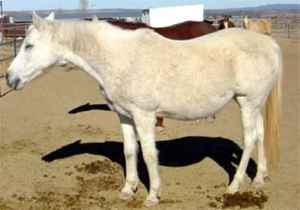Barb
N/A
Mon, 28th April, 2025 - 10:09 am GMT
Sponsor Ads:

Alternative Name
N/ABasic Info
The Barb is a light riding horse with great stamina. It has a powerful front end, high withers, short back, a sloping, narrow croup, and carries its tail low. It is hardy, with clean legs, and small, round, sound hooves. It does not have particularly good gaits, but has gallops like a sprinter, which has influenced the racing breeds such as the Thoroughbred, American Quarter Horse, and Standardbred. It usually is gray, but bay, black, chestnut, and brown horses are also found. The Barb stands 14-15 hands high. Theere are different types of the Barb including the Spanish Barb, the Abaco Barb, and others. The Abaco Barb can come in different colors than the usual Barb. It comes in a Splash Overo color which is rare in other horse breeds, pinto, roan, chestnut, black, and the other Barb colors. As of 2006, there were only twelve Abaco Barbs left in the world. The Spanish Barb is the Spanish influence of the Barb. Cortés brought the Spanish Barb over from Spain and the type has pretty much died out. But, there are a few left and they are chestnut, black, brown, and gray.
Health
N/AHabitat
N/ABehavior
The horses generally a fiery temperament and has less-desirable conformation, not typical for a sport horse, but has had an incredible impact on today's modern breeds. The Barb is speedy over a short distance and is well known for it`s unpredictable temper.Origin
Barbary Coast of North AfricaHistory
It is not exactly known where the Barb developed, although it is unlikely that the Barb and Arabian share a common ancestor. The Barb originated in Northern Africa during the 8th century. It is possible that is arose from crossing Turkmenian (the breed that also produced the Akhal-Teke) and Caspian horses, and descendants of Iberian horses. There are several varieties of Barb, including the Algerina, Moroccan, and Tunisian. When imported to Europe, they were often mistaken for Arabians, mainly because their handlers were northern African Muslims who spoke Arabic. The Godolphin "Arabian", which was one of the foundation sires for the thoroughbred breed, was actually a Barb stallion, and is now called the Godolphin Barb. He was given to King Louis XV of France by a Moroccan sultan. It is said that he was working as a cart horse in Paris when an Englishman Edward Coke bought him and took him to England. When Coke died, the horse was acquired by renowned breeder Lord Godolphin, who used him for breeding to English mares. The Barb has also been used for creating the Spanish Barb, the American Quarter Horse, the Mustang, the Appaloosa, the Andalusian and the Lusitano, as well as others. It is now bred primarily in Morocco, Algeria, Spain, and southern France, although, due to difficult economic times in its homeland, the number of pure-bred Barbs is decreasing. The World Organization of the Barb Horse, founded in Algeria in 1987, was formed to promote and preserve the breed. However, due to political situations, it is difficult to say how much of an increase in numbers or purity the breed will have.Common Foods
grassSponsor Ads:
The best way to make fire with two sticks is to insure that one of them is a match. -- Unknown
Barb
Coded by: BGID® | ALL RIGHTS RESERVED Copyright © 2000-2025
Disclaimer | Privacy | Report Errors / Contact | Credits


 Why haven't we as a collective earth met with aliens yet?
Why haven't we as a collective earth met with aliens yet?  The Best Text Adventure You Will Ever Play! The official site:
The Best Text Adventure You Will Ever Play! The official site:  Homosexual behavior stems from the mind or genetics?
Homosexual behavior stems from the mind or genetics?  World EcoSystem - Biodiversity Changes - Who is on board and who isn
World EcoSystem - Biodiversity Changes - Who is on board and who isn  Mouthwash - Mouthrinse - Mouth Sores - Healing Infections - Gingivitis
Mouthwash - Mouthrinse - Mouth Sores - Healing Infections - Gingivitis  Treatment for Depression
Treatment for Depression  Ultra radical and violent Islamist group that even rivals Al Qaeda
Ultra radical and violent Islamist group that even rivals Al Qaeda  An idea to have teachers who want to carry guns to school undergo some level of police training will be left up to local school districts and police departments.
An idea to have teachers who want to carry guns to school undergo some level of police training will be left up to local school districts and police departments.